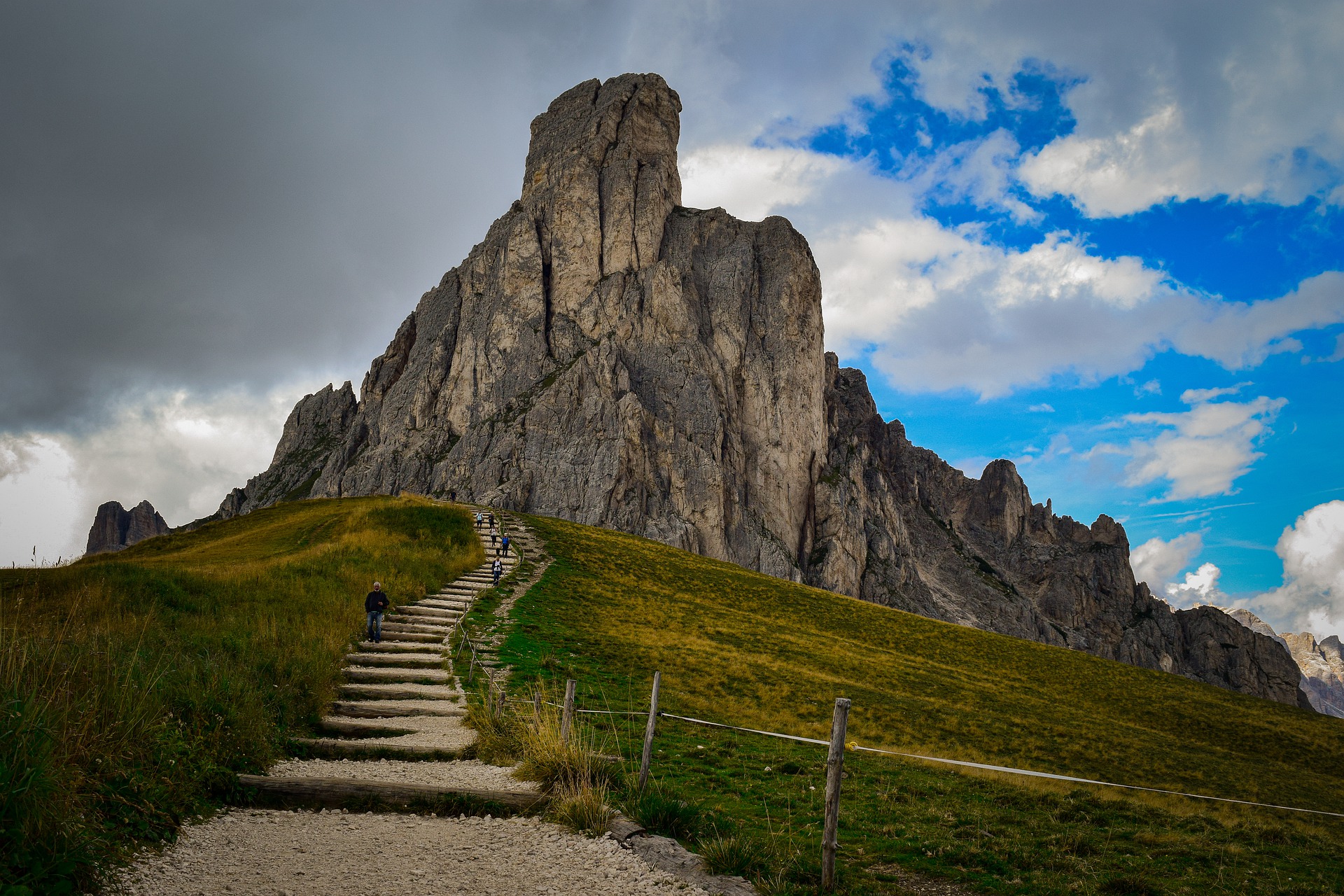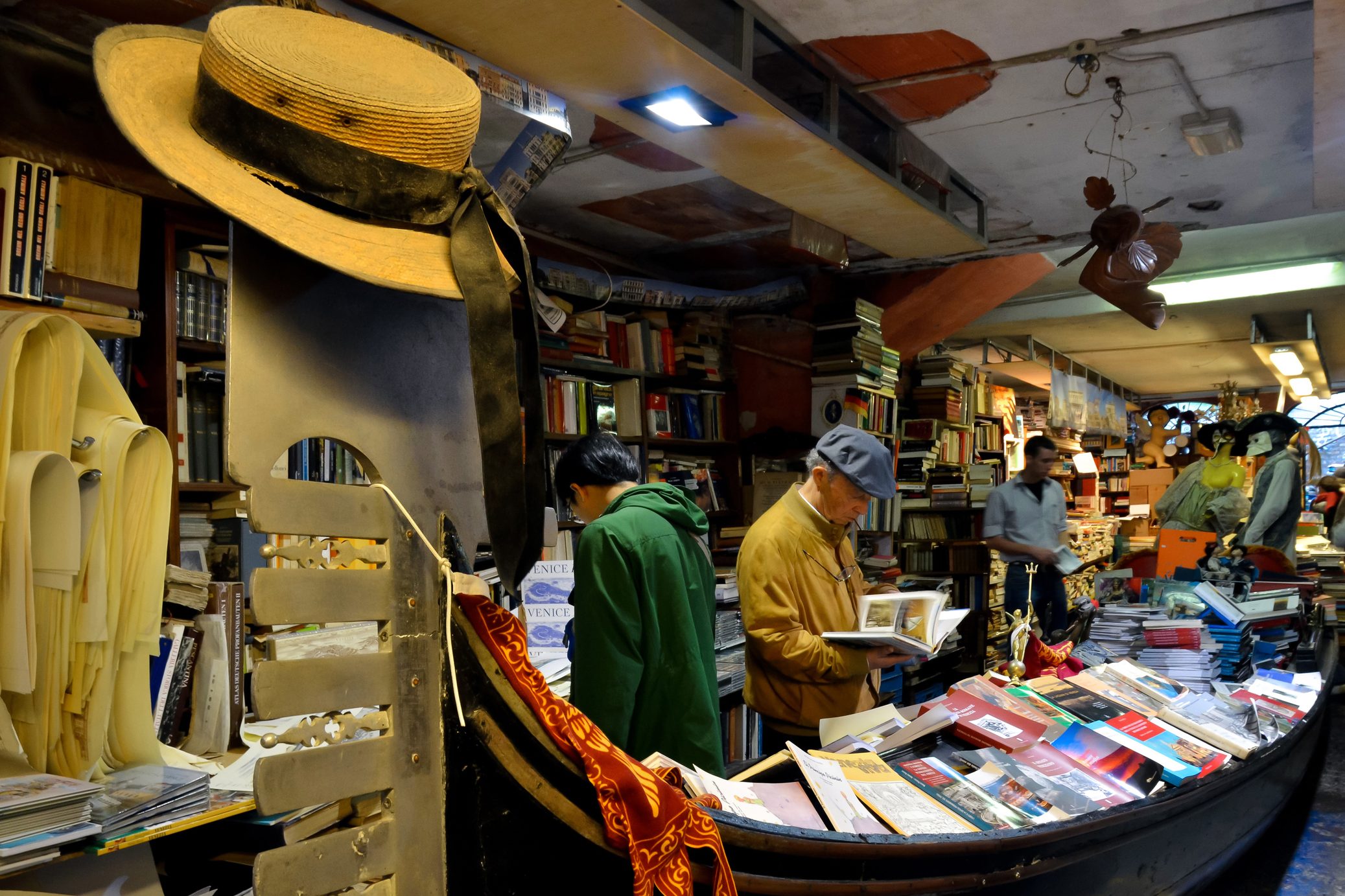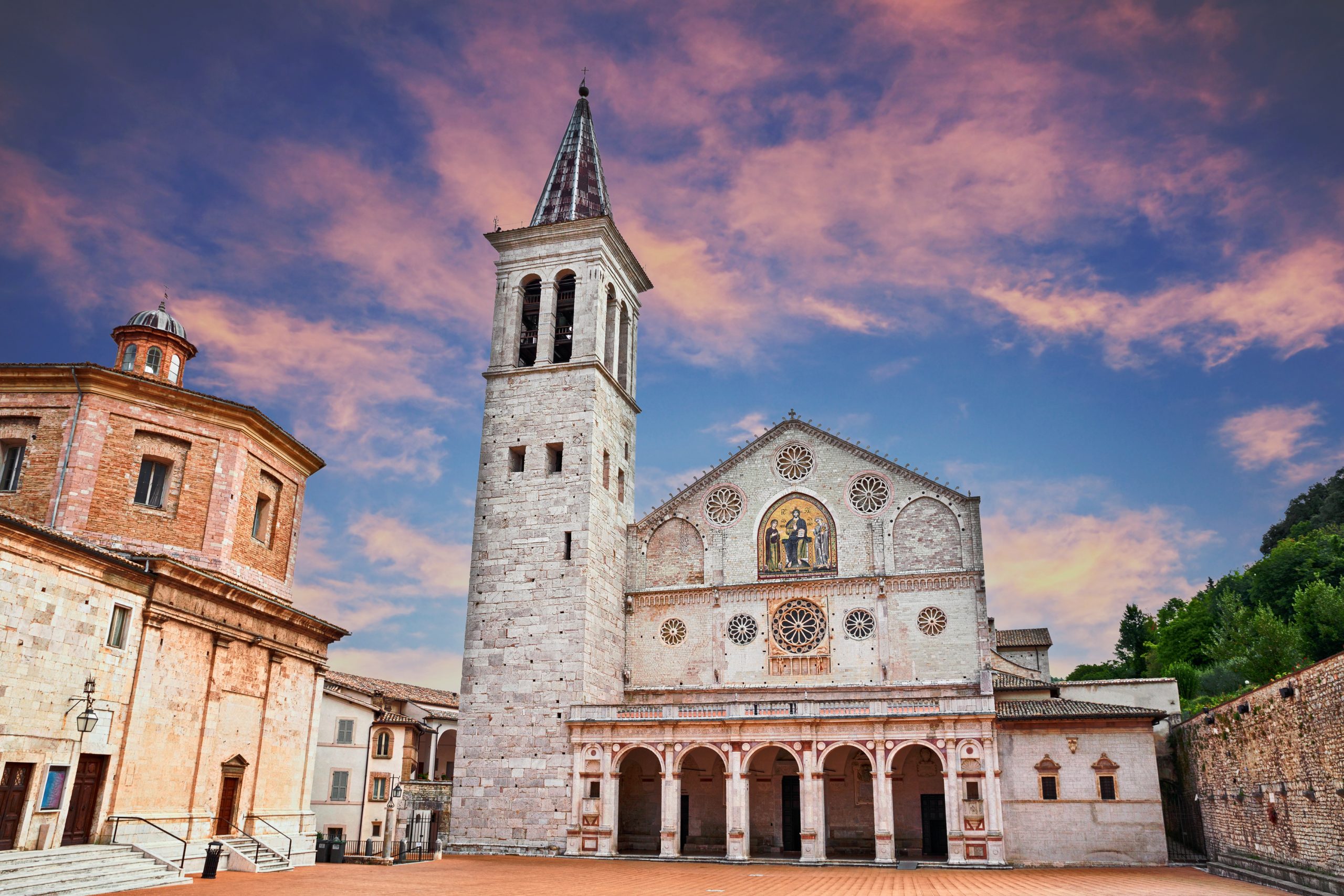Imagine walking through green fields dotted with tiny mountain flowers and on to winding rocky paths that seem to disappear into the bluest of skies, while the only sounds you hear are the gravel under your hiking boots and the distant gong of a cowbell. Walking through the Dolomites, the splendidly pink mountains in the northeast of Italy, is a truly magical experience for all those who enjoy the fresh air of the mountains and the challenge of conquering some of the most stunning peaks of the Alps.
Today the Dolomites are an oasis of peace, quiet and calm, but in the past, during World War I, they have been the backdrop to many difficult battles between the Austrians and the Italians: to this day the beautiful trekking path of the Grande Guerra (the Great War) retraces the epic tracks of those who walked, lived and died in the surrounding mountains. It was a long and exhausting war, fought in battles that took place perched on the sides of the mountains. Most of the times soldiers had to move at night, for the barren landscape gave them no shelter during the day and they had no way to avoid the snipers’ fire. The result is a complicated system of galleries, excavated in the rocks by thousands of soldiers, that can be visited to this day.
The trekking starts at the Rifugio Auronzo (6900 feet), easily reachable by car taking the toll road Tre Cime from Misurina (province of Belluno). Here the real adventure by foot begins by taking a dirt road that coasts the southern sides of the Cima Ovest and Cima Grande (path numbers 101 and 104). Past a beautiful mountain chapel the path continues to the Rifugio Lavaredo, a mountain hut and then on to the Forcella Lavaredo (7360 feet). From here the views are incredible, as you can see the imposing north faces of the Cima Grande and the Cima Ovest. Climbing to the right you will reach the galleries excavated during the Great War inside Mount Paterno: the gallery is dark and takes almost an hour to clear, but there is an alternative path that goes down to the Rifugio Locatelli Innerkofler and offers beautiful panorama of a small alpine lake and the Forcella di Toblin. The path continues toward the “Sausage peak” (Frankfurter Wurstel) and arrives at the access to the galleries. Here the galleries aren’t as dark and can be explored in about 15 minutes: on the other side they give access to a spectacular panorama point with views of the Tre Cime on the right and the Piani Lakes on the left. The path back to the starting point is one of unique beauty, with uninterrupted views and stunning scenery: the trail from start to finish takes about 3 ½ hours and is rated “E” for easy. The best time of the year to visit the Dolomites for hiking and walking is from June to September, when the snow has melted and the weather is warm and sunny even at the highest altitudes. For detailed information about the Giro della Grande Guerra and other trekking paths contact the local tourism bureau the Ufficio Turistico Auronzo di Cadore at www.infodolomiti.it
Picture perfect Val Badia is a great starting point to explore the area: the villages of San Cassiano, La Villa and Corvara offer plenty of accommodation options and are close to lifts. Cortina d’Ampezzo and Arabba in the nearby valleys are also a good starting point for mountain excursions. For a luxury and truly special stay check out Hotel Armentarola, in San Cassiano, Val Badia: stunning rooms, a privileged location and delicious restaurant make this hotel one of the best in the area. For more details: http://www.armentarola.com/en/hotel-alta-badia/1-0.html
The Dolomites can be reached by car with the A22 highway Modena Brennero, either by taking the Trento, Bolzano or Brunico exits, depending which valley you want to reach. Trains, too, connect Bolzano to main stations such as Bologna, Verona and Milano, from Bolzano a reliable bus service connects the town to villages in the nearby valleys.
































